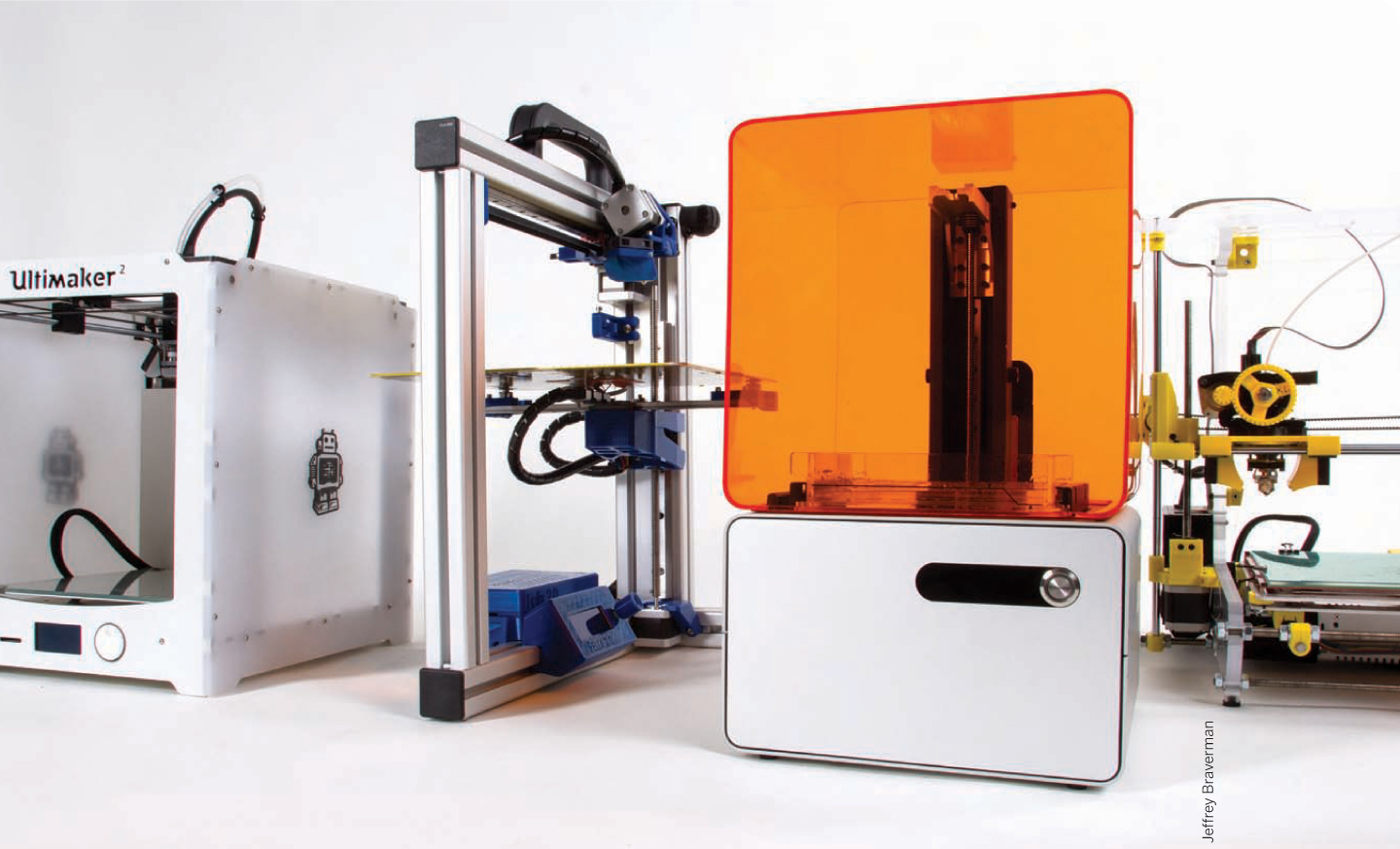3D PRINTING BUYER’S GUIDE
Here’s how we tested, compared, and rated 30 new 3D printers, scanners, and filament bots.

Which printer is right for you? The answer largely depends on your goals, budget, and user type. Will your machine be used at home in hobbyist pursuits and projects with the kids, or are you a designer or engineer who is considering a printer for your work? Must it accommodate the needs of multiple users in a school or makerspace? Is it a good value for the price? Are you a tinkerer or do you just want to hit the print button?
We thought carefully about this question as we prepared for our second shootout and decided that metrics alone wouldn’t give us the complete answer. Instead, we opted to review this year’s collection of printers with a more qualitative evaluation of the user experience. We increased the duration of our testing to include a setup period and shootout weekend, to better accommodate the learning curve that comes with every printer. We also focused our testing protocol on what we could realistically evaluate with a team of experts in the time allotted. We tested more machines than ever (adding 3D scanners and filament-making machines as well). Although we were unable to cover every printer on the market, we solicited fully assembled machines from every manufacturer that we were aware of, and if they sent us a machine, we tested it. Ultimately, we wanted to give readers a clear picture of what each machine does well, what it does poorly, and who it would serve best.
Are you ready to start printing? Then dive in and find the right tool. The options abound.
When reviewing each machine, we considered the following user profiles:
![]() MAKERS: Enjoy creating physical objects and want their tools to get the job done.
MAKERS: Enjoy creating physical objects and want their tools to get the job done.
![]() TINKERERS: Enjoy building machines and tweaking them, more interested in hardware than design.
TINKERERS: Enjoy building machines and tweaking them, more interested in hardware than design.
![]() DESIGNERS: Accustomed to drafting physical objects, not creating them. More comfortable in software than hardware.
DESIGNERS: Accustomed to drafting physical objects, not creating them. More comfortable in software than hardware.
We also found ourselves assessing the needs of beginners, students, educators, makerspaces, prosumers, and professionals who may use the machines as part of a business.
![]() CHRISTMAS CAME EARLY
CHRISTMAS CAME EARLY
To ensure that the printers were in working order prior to the shootout, we performed “Christmas morning” tests as each machine arrived, unboxing, printing a small MAKE robot, and rectifying any initial hardware issues.
![]() BEGINNER’S PERSPECTIVE
BEGINNER’S PERSPECTIVE
Although many of our team had extensive 3D printing experience, we asked them to try to approach the reviews like a brand-new user, and to assess the audience for each machine. Each tester reviewed a machine they hadn’t previously used, first carefully reading all documentation, then setting up their printer by replicating the MAKE robot test print.
![]() CAREFUL COLLABORATION
CAREFUL COLLABORATION
During the shootout, we paused the testing at several points to discuss our findings and reorient expectations. We also compared the challenge prints from all machines at the end.
![]() TIPS AND CUSTOMER SUPPORT
TIPS AND CUSTOMER SUPPORT
Testers were encouraged to evaluate customer support responsiveness to further help our readers determine which printer is right for them; when a printer issue arose, its reviewer would contact the company directly and document the experience.
Full details of our testing procedure can be found at makezine.com/3Dprinting2014.
This Year’s Trends in 3D Printing
Developments in desktop 3D printers come at a breakneck pace, and this year’s roundup brought exciting new trends emerging in size, shapes, and print materials.
![]() SMALL AND AFFORDABLE
SMALL AND AFFORDABLE
Until recently, there has been a steep drop off when entering the small, sub-$1,000 3D printer realm. But with a couple new machines in our test, we now have access to printers that aren’t just portable and low-cost, they’re also capable of producing respectable results.
![]() PRECISE PRINTS WITH LIQUID RESIN
PRECISE PRINTS WITH LIQUID RESIN
Light-cured resin printers, new to our testing, are in a class by themselves, both in terms of the SLA technology used and the quality of the prints produced. Both of the machines we tested in this category are quickly being adopted by designers and craftspersons who require professional-grade details.
![]() THREE-ARMED ROBOTS AND AUTOMATIC ADJUSTMENTS
THREE-ARMED ROBOTS AND AUTOMATIC ADJUSTMENTS
With smooth, fast-moving heads, delta robot printers also entered the 3D printing conversation this year; we tested the OpenBeam Mini Kossel while keeping our eye on nearly a half dozen more (see our “Ones to Watch” section on page 100).
The Mini Kossel and the more typical Up Plus 2 also introduced auto-leveling features, which eliminates one of the monotonous manual steps required when setting up a print job.
![]() THE PROSUMER CATEGORY GROWS
THE PROSUMER CATEGORY GROWS
Until recently, the prosumer selection for fused-filament printers has largely been limited to the MakerBot Replicator 2. However, the new Ultimaker 2 now provides a viable option to those needing high-quality results, onboard controls and intuitive high quality software, with a form factor that is suitable for a professional workplace.
